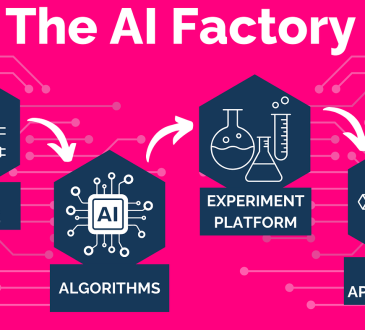Report Predicts AI Will Create More Jobs Than It Eliminates by 2027

As artificial intelligence (AI) becomes increasingly embedded in our daily lives—from healthcare and finance to transportation and entertainment—concerns about widespread job losses have dominated conversations. But a new report suggests these fears might be overblown. Rather than decimating employment, AI is expected to transform the job landscape, creating more opportunities than it displaces by 2027.
The report, compiled by labor economists, technology analysts, and industry experts, provides an in-depth look at AI’s projected impact on the global workforce. By analyzing automation trends, machine learning adoption, and sector-specific needs, the study finds that while some roles will be displaced, many new positions will emerge, particularly in industries that embrace AI instead of competing against it.
Rethinking Job Displacement
Technological revolutions have always sparked fears of mass unemployment—from the Industrial Revolution to the rise of personal computers. But history shows a familiar pattern: automation eliminates certain repetitive tasks but creates demand for new skills, industries, and job types.
This report views AI as part of that ongoing trend. It highlights that AI will mostly automate routine tasks, freeing humans to focus on creative, strategic, and interpersonal work. For example, administrative tasks in finance or customer service may be automated, but roles that require judgment, empathy, and complex decision-making are expected to grow.
Dr. Elena Martinez, senior economist at the Global Workforce Institute and lead author of the report, notes:
“AI is not simply replacing human labor—it complements it. Our projections show that for every job AI displaces, more than one new job will be created as organizations adapt to these technologies.”
Where AI Is Driving Job Growth
The report identifies several sectors where AI is likely to catalyze significant employment opportunities:
Healthcare
- AI-driven diagnostic tools, robotic surgical assistants, and personalized treatment planning will create demand for technical specialists, AI trainers, and clinical support staff.
- Human oversight will remain crucial for interpreting AI outputs, interacting with patients, and managing care.
Finance
- AI adoption will boost roles in model oversight, data analysis, fraud detection, and financial advisory.
- While routine bookkeeping may decline, demand for professionals interpreting AI insights and ensuring ethical investment decisions will rise.
Education
- AI-powered learning platforms and personalized tutoring systems will create roles for educational technologists, content developers, and AI curriculum specialists.
- Teachers will increasingly work alongside AI to design adaptive learning experiences and provide guidance where human interaction is critical.
Manufacturing
- AI-powered robotics and predictive maintenance will replace some manual roles but create positions in robotics maintenance, programming, quality assurance, and systems integration.
- “Modern manufacturing is shifting from repetitive tasks to managing intelligent systems,” the report emphasizes.
AI as a Catalyst for Entrepreneurship
AI isn’t just transforming traditional sectors—it’s opening doors for entrepreneurship and innovation.
- AI-powered content platforms, virtual assistants, automated logistics, and precision agriculture are creating entirely new businesses.
- Small and medium-sized enterprises (SMEs) benefit as AI reduces operational costs, levels the playing field with larger competitors, and generates new job opportunities as these businesses expand.
Addressing the Skills Gap
The report stresses that reskilling and upskilling will be critical to maximizing AI’s job creation potential. As some traditional roles fade, workers will need skills in:
- Data analysis
- Machine learning
- AI ethics
- Human-AI collaboration
- Digital literacy
Governments, educational institutions, and businesses are urged to support workforce transitions through training programs, public-private partnerships, and online learning platforms. Proactive measures will ensure that the projected net job creation is realized.
Balancing the Economic Impact
The report warns that AI will not guarantee equitable growth. Benefits may vary by region, industry, and demographic:
- Workers in rapidly automated sectors may face temporary displacement or wage stagnation.
- Regions with strong educational infrastructure and technology ecosystems may see disproportionate gains.
Dr. Martinez highlights:
“AI can create jobs, but the growth won’t be evenly distributed. Policymakers and business leaders must ensure inclusive growth, support reskilling initiatives, and foster collaboration between humans and AI.”
Looking Ahead
By 2027, AI could create millions of new jobs worldwide, surpassing the number it displaces. This outlook challenges the narrative that AI is primarily a threat to employment.
For employees, the key takeaway is clear: adaptability and continuous learning are essential. For employers, the focus should be on thoughtful AI integration, investing in human talent, and embracing new business models.
Ultimately, the report concludes that AI’s impact should not be measured solely by jobs lost, but by opportunities created, efficiency gained, and the potential for human-AI collaboration. History shows that technological revolutions often generate unexpected new forms of work—and AI appears poised to follow the same path, transforming work rather than eliminating it.




